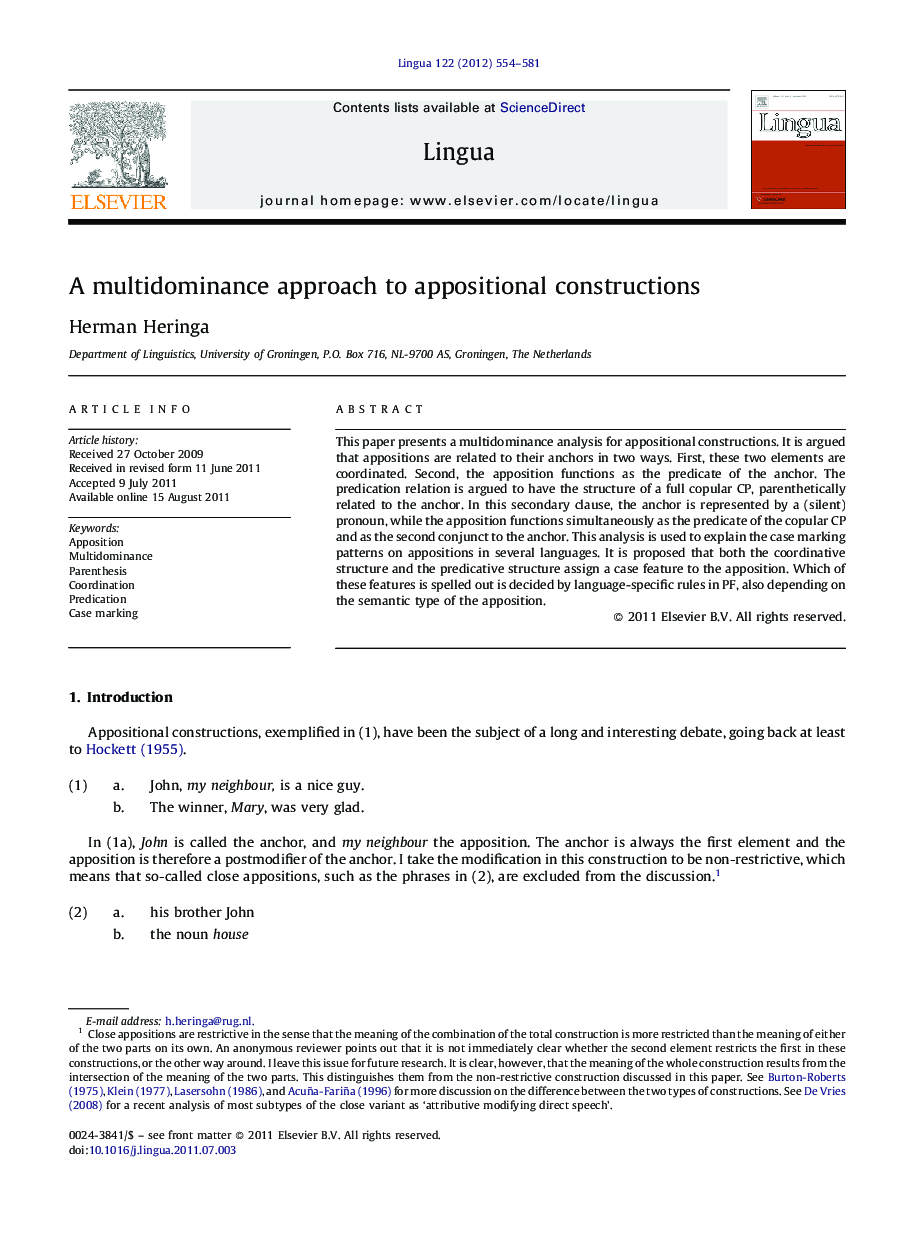| Article ID | Journal | Published Year | Pages | File Type |
|---|---|---|---|---|
| 935399 | Lingua | 2012 | 28 Pages |
This paper presents a multidominance analysis for appositional constructions. It is argued that appositions are related to their anchors in two ways. First, these two elements are coordinated. Second, the apposition functions as the predicate of the anchor. The predication relation is argued to have the structure of a full copular CP, parenthetically related to the anchor. In this secondary clause, the anchor is represented by a (silent) pronoun, while the apposition functions simultaneously as the predicate of the copular CP and as the second conjunct to the anchor. This analysis is used to explain the case marking patterns on appositions in several languages. It is proposed that both the coordinative structure and the predicative structure assign a case feature to the apposition. Which of these features is spelled out is decided by language-specific rules in PF, also depending on the semantic type of the apposition.
► An apposition is related to its anchor via coordination. ► At the same time, the apposition functions as the predicate of the anchor. ► The predication relation has the structure of a full copular CP. ► This secondary clause is related to the anchor via parenthetical construal. ► This approach explains case marking patterns on appositions in several languages.
